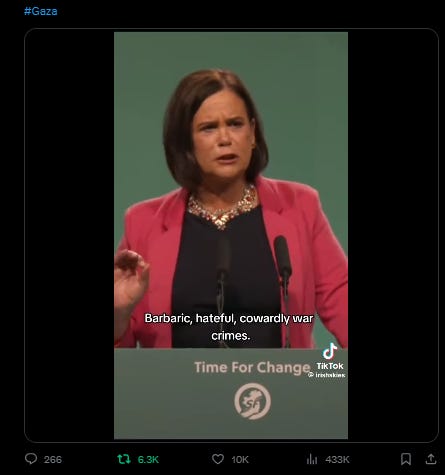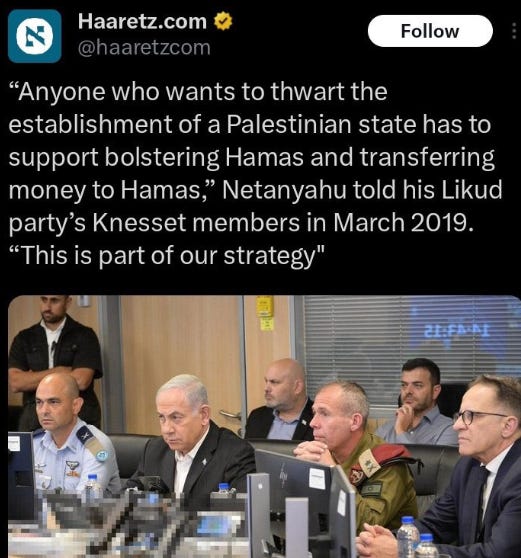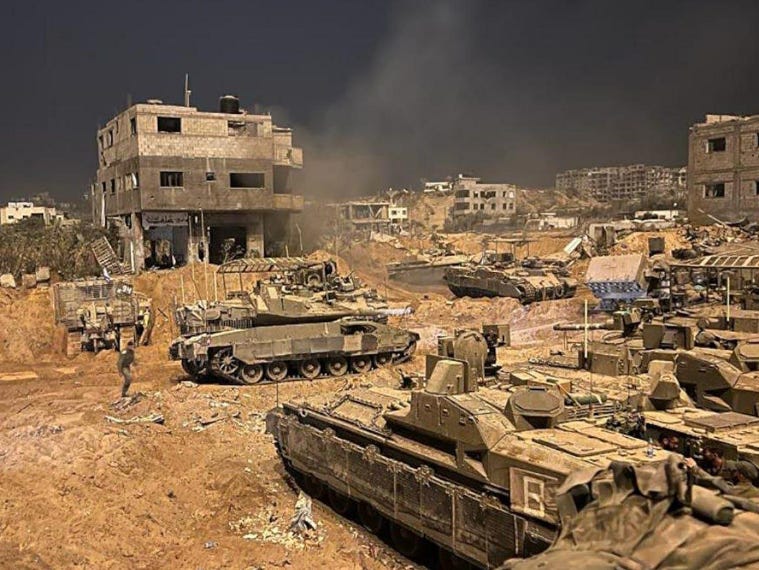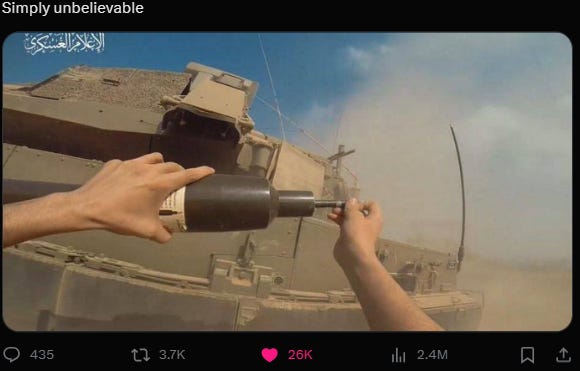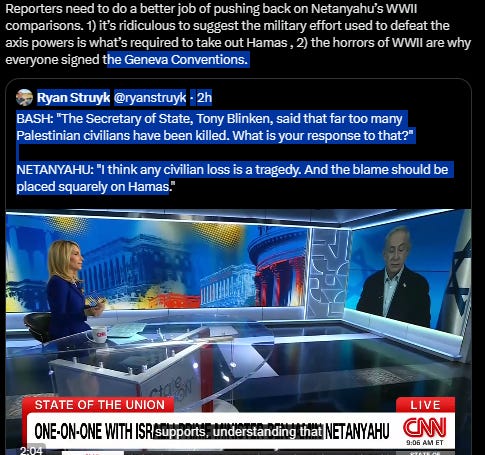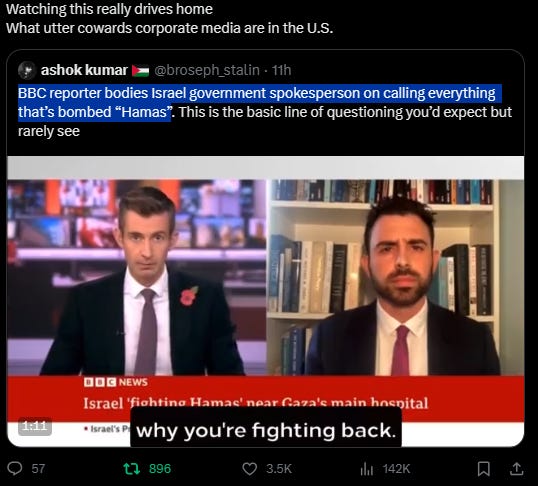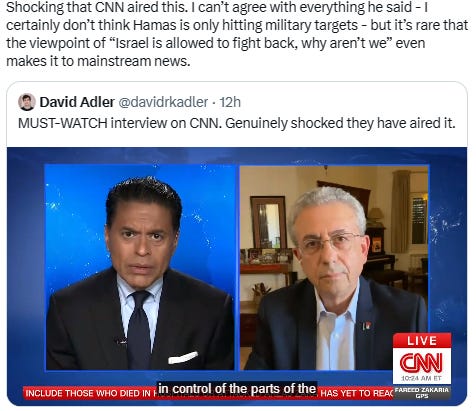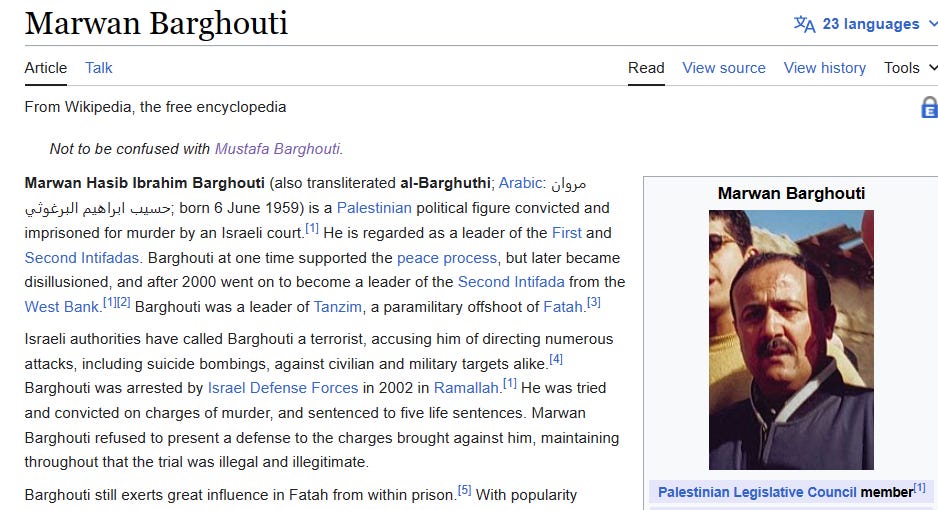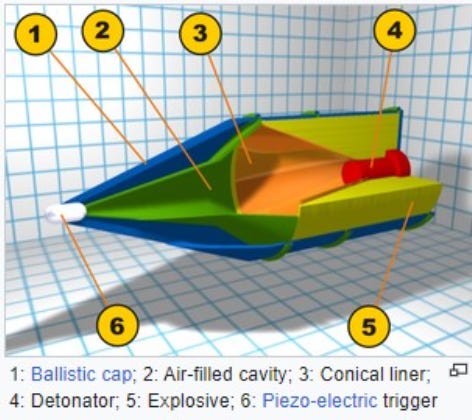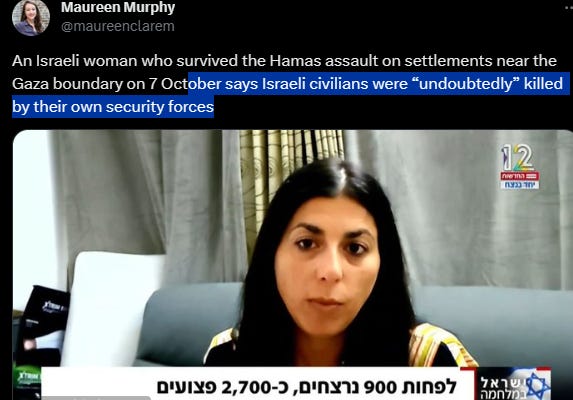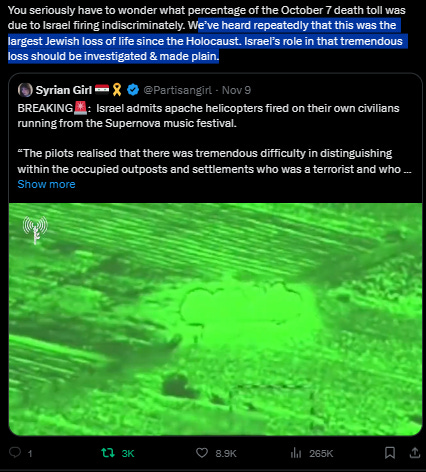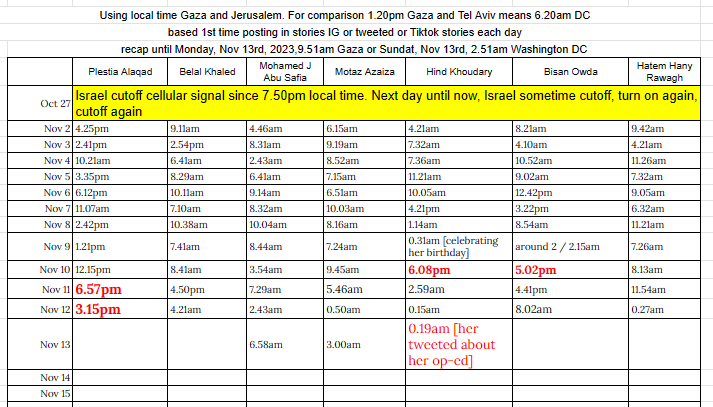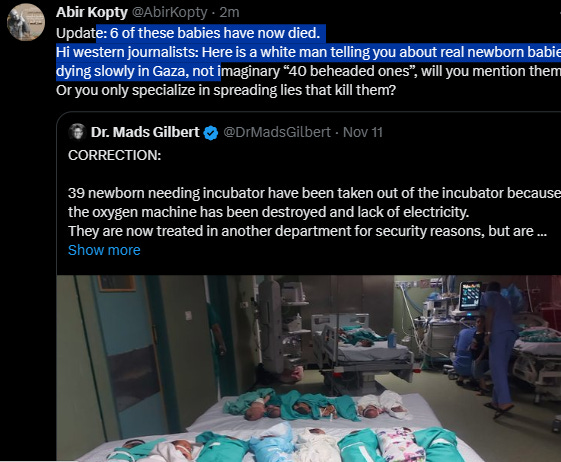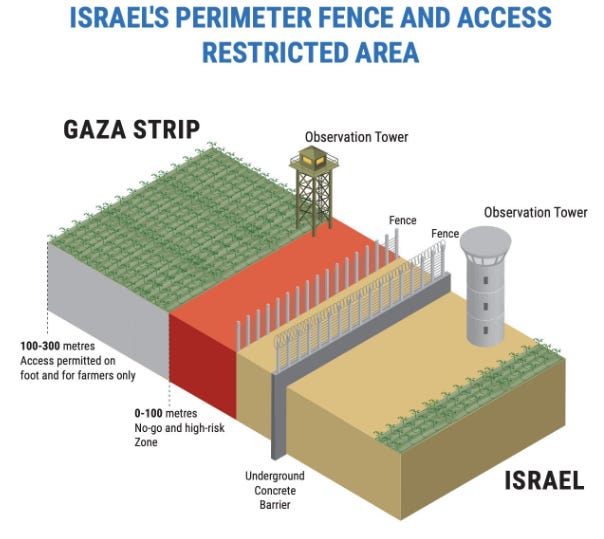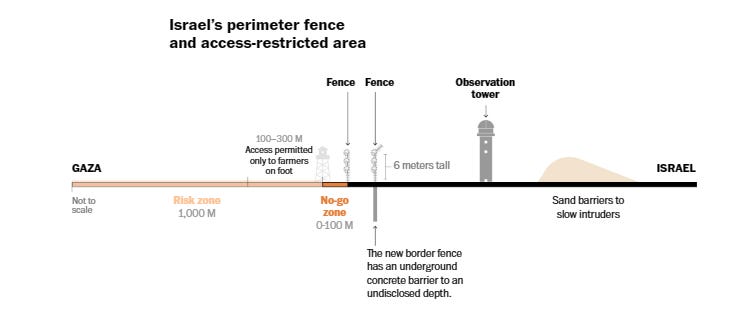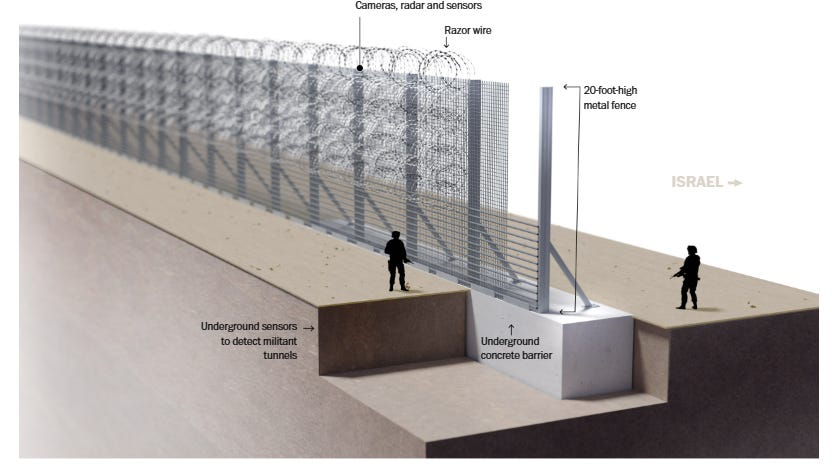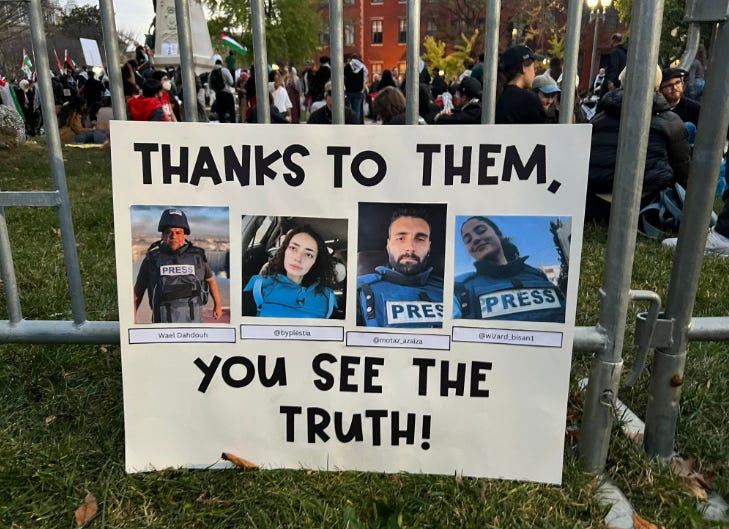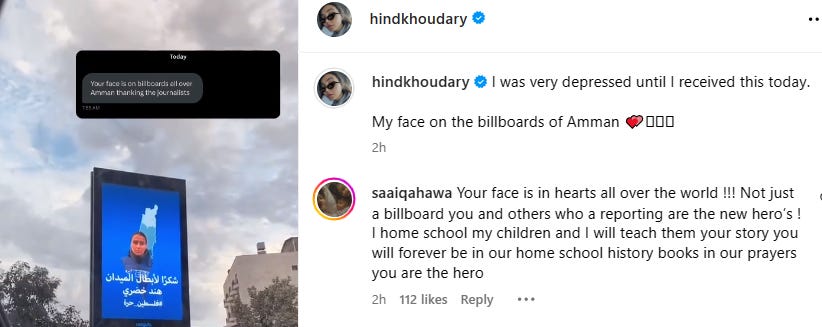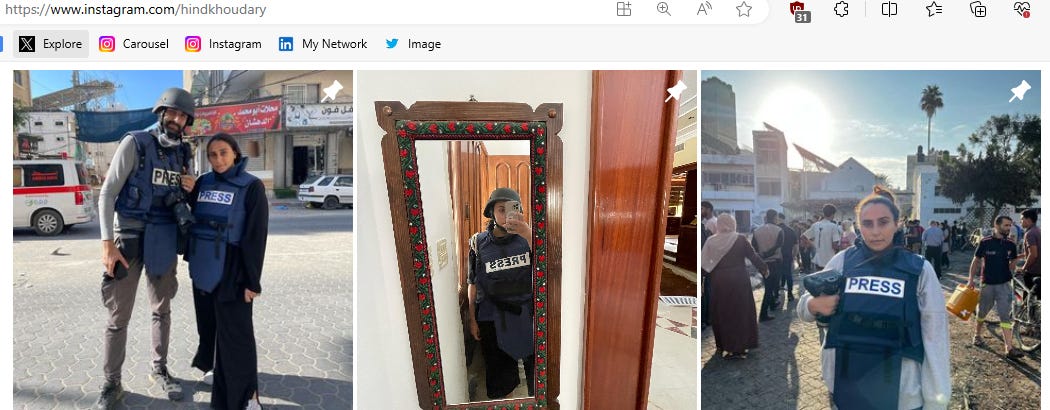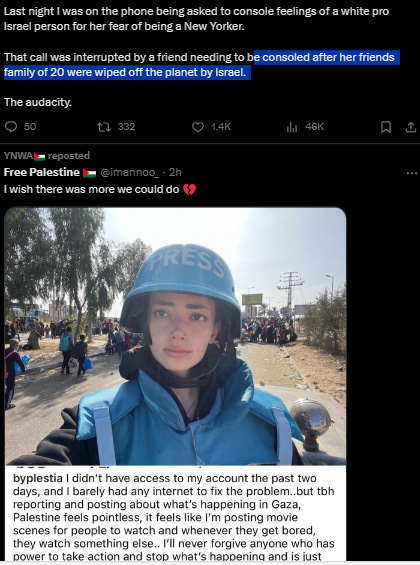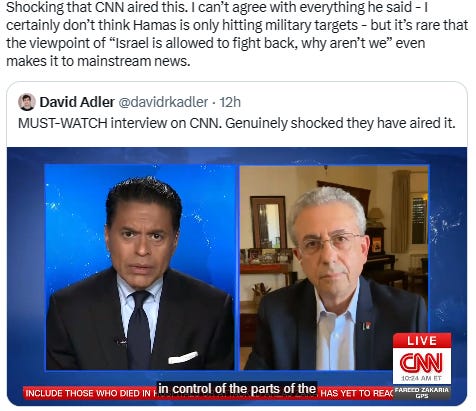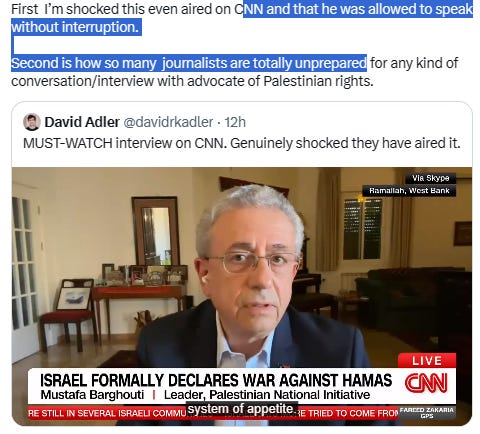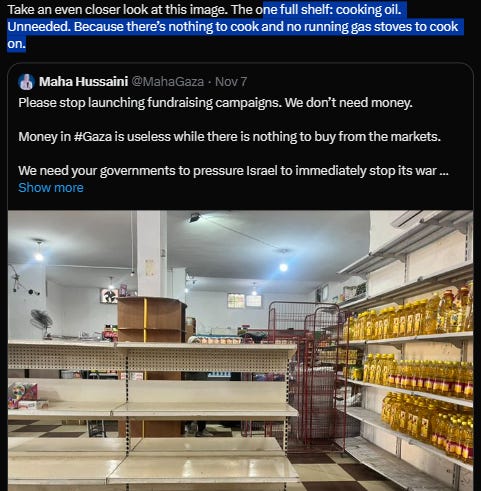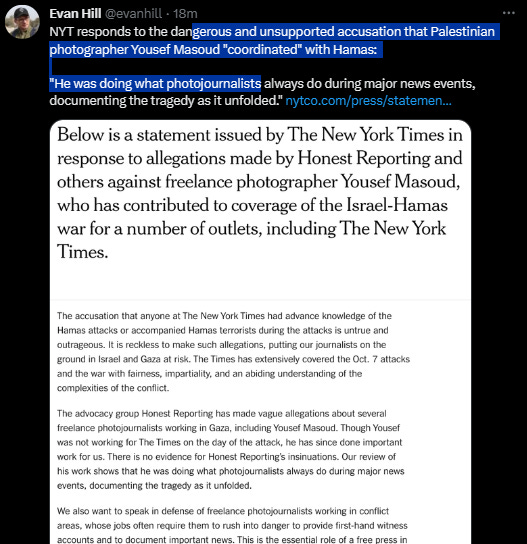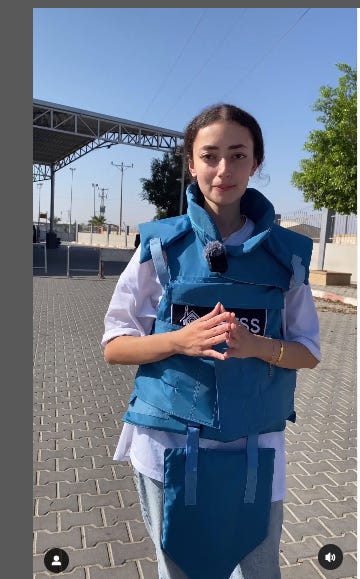Unmute HAMAS, smarter than Vietcong, ISIS, or Taliban
If they're big and you're small, then you're mobile and they're slow. You're hidden and they're exposed. Only fight battles you know you can win. That's the way the Vietcong did it
GAZA STRIP AND TEL AVIV 10.02AM
‘In guerilla warfare, you try to use your weaknesses as strengths. If they're big and you're small, then you're mobile and they're slow. You're hidden and they're exposed. Only fight battles you know you can win. That's the way the Vietcong did it. You capture their weapons and you use them against them the next time. That way they're supplying you. You grow stronger as they grow weaker.’ [ENEMY OF THE STATE, movie, November 20th, 1998, 25 years ago. Will Smith as Robert Clayton Dean, and Gene Hackman as Edward "Brill" Lyle]
The tactic Hamas is using is not a novelty. During the Vietnam War the Vietcong communist militants had vast tunnels network within South Vietnam some even running right into America outposts. A few American soldiers went in these tunnels they were called "tunnel rats". It was a gruesome enterprise to go into these dark tunnels. "Israel's army has, however, reached a point in its campaign where the Israeli government's stated objectives—to destroy Hamas's military infrastructure and to rescue the 239 hostages still held in Gaza—are in increasing tension.
Vietcong Tunnel
If SOPHISTICATED WEAPONS were used against an organised military force I wouldn't think much of this. But these will be used against Palestinians that is not an organised military force but rather religious militants. I would compare Hamas to the Vietcong communist militants. It's a different kind of mindset from a professional army by trade. And the concept of "professional army by trade" is what the Armies of Russia to Canada and US. are built upon.
Gaza Palestine and Trảng Bàng Vietnam. Unidentified girl [left], and Phan Thi Kim Phuc OOnt [THE ORDER OF ONTARIO] right picture.
The most loathsome people on this site: all those gloating, minimizing, or making fun of the pain and grief of *anyone* who has lost someone in this whole Gaza disaster. Despite the unbearable pain and suffering, second NAKBA, the heart wrenching grief and the sea of blood, tears, of severed limbs and broken bodies, Vietnamese [suffered 3 decades painful amid US and Soviet], Irish [suffers 8 centuries of Brit occupation] believe that Palestinian are closer today to victory than Palestinian have been since the process of Nakba began 75 years ago.
Gerry Adams [Gearóid Mac Ádhaimh]. Former Sinn Fein leader.
Mary Louise McDonald, current Sinn Fein leader, replace Gerry Adams
After seeing the Israelis gaggle enormous traffic jams of armor into Gaza and proceed to make marginal gains against insurgents with light arms, every single wannabe tactician on this website slagging on the Russians for moving in column sometimes owes them an enormous apology.
Bad tactics are bad tactics, IDF isn't gonna magically turn into a different army when faced against a different enemy. The Merkava tank like the Leopard or the Challenger just to name those two have their ammo rack lightly armoured in case the tank gets hit it will blow up without instantly killing the crew because the crew is more important than the tank itself. So the only way to counter act fast moving lightly geared militants equipped with RPG's is to protect armoured vehicles with close infantry support.
Moving through those rubbles makes infantry movements very arduous and complicated. The IDF is not out of the woods. Russia as a solid armoured warfare doctrine I am not worried in the least for them. I can't say as much for the IDF. They lost a staggering number of Merkava's so far in their operation. And contrary to Russia Israel can not bounce back and build new tanks they way Russia managed to compensate it's losses.
Russian tanks do not have their storage rack in the turret it sit at the bottom of the turret basket. This is why Russian tanks have a much smaller turret than Western tanks. And Russia has much improved the Panzerfaust design to the much dreaded RPG-7 we have today.
So Russian engineer have taken the RPG in consideration in their tank designs. Now if you want to talk numbers take a look at this spread sheet of the thickness of the turret armour for both parts of the turret being the ammo racks and the loader gunner positions.
Fareed Zakaria and Mustafa Barghouti. Mustafa begs to you to keep talk about Palestine. Mustafa Barghouti is a distant cousin of Marwan Barghouti, who is the Secretary General of Fatah West Bank, still under jail in Israel. A lot of people agree Marwan is mastermind of guerilla, and also ‘The Mandela of Palestine’
The Challenger II ammo rack is so thin they don't even need a blowout panel. And I know what a blowout panel is by the way. If the ammo rack armour would be so thick has to resist an RPG round or if a round would not be able to penetrate the ammo rack the whole rack would burn itself out inside the tank taking the crew out with it. If you want to tell me that Western engineers have done a much poorer job in their tank designs than their Russian counterparts is open for debates.
From a strictly military point of view what the militants of Hamas are doing makes sense. Last number figure they had lost some 90 Merkava tanks since ground operation started [Oct 27th, 7.50pm Gaza or 12.50pm Washington DC] and other armoured vehicles. I can assume this is what is happening because the Israelis have cut everything off so who knows exactly. Again from a strictly military point of view Hamas militants are using classic infantry tactics against armoured vehicles. It's not novelty the Germans invented the thing and named it the Panzerfaust or "armour fist". It's basic principle works around a shaped charge.
The first clues came from the bodies of slain militants: maps, drawings, notes, and the weapons and gear they carried.
In Beeri, a kibbutz town overrun by Hamas on Oct. 7, one dead fighter had a notebook with hand-scrawled Quranic verses and orders that read, simply, “Kill as many people and take as many hostages as possible.” Others were equipped with gas canisters, handcuffs and thermobaric grenades designed to instantly turn houses into infernos.
Each was like a piece from a grisly puzzle, a snippet of fine detail from an operation that called for hundreds of discrete crimes in specific locations. Five weeks later, the reassembled fragments are beginning to reveal the contours of Hamas’s broader plan, one that analysts say was intended not just to kill and capture Israelis, but to spark a conflagration that would sweep the region and lead to a wider conflict.
The evidence, described by more than a dozen current and former intelligence and security officials from four Western and Middle Eastern countries, reveals an intention by Hamas planners to strike a blow of historic proportions, in the expectation that the group’s actions would compel an overwhelming Israeli response. Several officials who had not previously spoken about the matter said the intelligence about Hamas’s motivations has become stronger in recent days.
The findings also shed new light on the tactics and methods used by Hamas to deceive Israel’s vaunted intelligence establishment and thwart initial efforts by the Israel Defense Forces to stop the attack. After breaching the Israeli border in some 30 places, Hamas militants staged a mass slaughter of soldiers and civilians in at least 22 Israeli villages, towns and military outposts and then drew Israeli defenders into gun battles that continued for more than a day.
New evidence suggests that they were prepared to go even further. Some militants carried enough food, ammunition and equipment to last several days, officials said, and bore instructions to continue deeper into Israel if the first wave of attacks succeeded, potentially striking larger Israeli cities.
The assault teams managed to penetrate as far as Ofakim, an Israeli town about 15 miles from the Gaza Strip and about half the distance between the enclave and the West Bank. One unit carried reconnaissance information and maps suggesting an intention to continue the assault up to the border of the West Bank, according to two senior Middle Eastern intelligence officials and one former U.S. official with detailed knowledge of the evidence. Hamas had been increasing its outreach to West Bank militants in recent months, although the group says it did not notify its West Bank allies of its Oct. 7 plans in advance.
“If that had occurred, it would have been a huge propaganda win — a symbolic blow not only against Israel, but also against the Palestinian Authority,” the government that exercises partial control in the West Bank, said the former U.S. official who was briefed on evidence collected since the Oct. 7 attack. The former official, like several others interviewed, spoke on the condition of anonymity to discuss preliminary intelligence findings.
As it happened, even Hamas was surprised by the sweeping nature of its incursion on Oct. 7, according to the group’s public statements as well as assessments shared privately with journalists. But Hamas leaders expected that their assault would yield more than just hostages, current and former intelligence officials said.
A Hamas official, Basem Naim, asserted in an interview Friday that the group planned in advance for a severe Israeli retaliation. He cited recent events, such as Jewish settler attacks against Palestinians in the West Bank and the storming of Jerusalem’s al-Aqsa Mosque by settlers, as fueling Palestinian rage.
“We knew there was going to be a violent reaction,” Naim said. “But we didn’t choose this road while having other options. We have no options.”
until 9 / 10am Gaza or Tel Aviv, as I try to monitored ‘still alive message’ by at least 7 Gazan journo, only Motaz Azaiza, Hind Khoudary, and Mohamed Saifa already say Hi. 4 others, Plestia Alaqad, Belal Khaled, Bisan Owda, Hatem Hany Rawagh not yet post
something.
Hamas meticulously planned and prepared for a massacre of Israeli civilians on a scale that was highly likely to provoke Israel’s government into sending troops into Gaza, analysts said. Indeed, Hamas leaders have publicly expressed a willingness to accept heavy losses — potentially including the deaths of many Gazan civilians living under Hamas rule.
“Will we have to pay a price? Yes, and we are ready to pay it,” Ghazi Hamad, a member of the Hamas politburo, told Beirut’s LCBI television in an interview aired on Oct. 24. “We are called a nation of martyrs, and we are proud to sacrifice martyrs.”
Hamas was willing to accept such sacrifices as the price for kick-starting a new wave of violent Palestinian resistance in the region and scuttling efforts at normalizing relations between Israel and Arab states, according to current and former intelligence officials and counterterrorism experts.
“They were very clear-eyed as to what would happen to Gaza on the day after,” said a senior Israeli military official with access to sensitive intelligence, including interrogations with Hamas fighters and intercepted communications. “They wanted to buy their place in history — a place in the history of jihad — at the expense of the lives of many people in Gaza.”
The planning for the historic assault against Israel was underway for well more than a year before the events of Oct. 7, intelligence officials say. Hamas officials took pains to conceal the preparations, even as senior leaders dropped occasional hints about their intentions.
Throughout the Gaza Strip — the densely populated, heavily surveilled seaside enclave roughly the size of Philadelphia — Hamas conducted above- and below-ground military exercises. Hamas fighters trained with imported AK-47 rifles, handguns, rocket-propelled grenade launchers, and thermobaric projectiles that generate powerful pressure waves and intense fires with temperatures exceeding 2,700 degrees Fahrenheit.
As they trained, they carefully scrutinized population centers and military bases to create a matrix of potential targets, Western and Middle Eastern intelligence officials said.
To obtain detailed intelligence, Hamas deployed cheap surveillance drones to generate maps of the Israeli towns and military installations within a few miles of the US$1 billion barrier system that Israel built to wall off Gaza.
The group elicited additional information, intelligence officials said, from Gazan day laborers who were permitted to enter Israel for work, often in the same farming communities that were in Hamas’s crosshairs. It even monitored Israeli websites, studying real estate photographs and social media postings depicting life inside kibbutzim and the layouts of buildings and houses.
The intelligence gathering was not particularly sophisticated, but it was methodical, said Ali Soufan, a former FBI counterterrorism official and founder of the Soufan Group, a private New York security consultancy that works closely with Middle Eastern governments.
“If you’re in prison, you study the prison security system. That is what Hamas has been doing for 16 years,” Soufan said. “Their on-the-ground intelligence was way better than anything the Iranians could have given them.”
The precise plans for how and where the Hamas shock troops would attack were restricted to a tiny circle of elite military planners, amid what Western officials described as professional-grade operational security. The most crucial details appear to have been withheld even from Hamas’s political leadership and the group’s chief backers, Iran’s Islamic Revolutionary Guard Corps and the Lebanese-based Hezbollah militant group, as officials from both organizations have publicly acknowledged.
As the plotting progressed in secret, others in the Hamas leadership were busy planting seeds for an extraordinarily sophisticated deception.
The plan’s top architect, Israel believes, was Yehiya Sinwar, Hamas’s military leader. Formerly a Hamas detainee who spent two decades in Israeli prisons, Sinwar is fluent in Hebrew and a self-avowed student of Israeli political culture and news media. Armed with an unusually deep understanding of prevailing political currents in Israel, he and other Hamas leaders began issuing subtle signals in recent years hinting of a new pragmatism.
It was a message that Israelis wanted to hear — that “Hamas wants no more wars,” said Michael Milshtein, the former chief of Palestinian affairs in Aman, Israel’s military intelligence directorate. Milshtein, who briefly met Sinwar years ago, said that Oct. 7 bore an essential hallmark of Sinwar’s previous operations: a “knowledge of the basic consciousness of the Israeli public.”
To buttress that perception of moderation, clashes between Hamas and Israel ceased after 2021. The group notably refrained from jumping in on several occasions when its Gaza ally, Palestinian Islamic Jihad, or PIJ, fired rockets or engaged militarily with Israel. To many in Israel, it was further evidence that Hamas had changed and no longer sought a bloody conflict. Some reports suggested that Hamas officials even passed along intelligence about PIJ to the Israelis to reinforce the impression that they were being cooperative.
A 2021 campaign billboard for the Likud party shows a portrait of Prime Minister Benjamin Netanyahu defaced with Hebrew that reads, “go home,” next to opposition party leader Yair Lapid in Ramat Gan, Israel. (Oded Balilty/AP)
That’s not to say that Sinwar and other Hamas leaders did not occasionally call for Israel’s annihilation. In a 2022 speech, Sinwar warned Israelis that Hamas would one day “march through your walls to uproot your regime.” Yet he and other leaders also professed an overarching commitment to building up the enclave’s infrastructure and improving the economic situation for its 2 million residents. Since 2020, the European Union and other international donors have contributed to dozens of new projects, from schools and youth sports facilities to roads and sewage treatment plants.
In quiet support of Gaza’s economic development, Israel agreed to grant work permits to up to 20,000 Gazan laborers. Meanwhile, it allowed Qatar to deliver $30 million monthly in development funds, first in the form of enormous suitcases brimming with cash, then through Gazan retail stores, said Amos Yadlin, the former head of Israel’s defense intelligence and the president of Mind Israel, a consultant group for Israeli politicians and security agencies.
The relative calm on Israel’s southwestern border was welcome, as Israeli officials were preoccupied with problems elsewhere. Prime Minister Benjamin Netanyahu’s government was threatened by historic domestic unrest, including unprecedented waves of demonstrations against his far-right administration’s proposed judicial overhaul. Israel’s military perceived a far greater security threat from Hezbollah in the north and from violent Palestinian groups engaged in escalating clashes with Israeli soldiers and armed settlers in the West Bank.
Captured Hamas weapons, including hand grenades and rocket-propelled grenades, are displayed during a news conference for foreign media at a military base in southern Israel on Oct. 20. (Heidi Levine for The Washington Post)
The concerns about the West Bank intensified over the summer with the discovery of new attempts by outside groups to arm and incite Palestinians to violence. Officials in Jordan intercepted several shipments of small arms and explosives in the past year that had been smuggled into the country, intended for recipients in the West Bank, according to two Middle Eastern intelligence officials with detailed knowledge of the events.
The contraband, transported in some cases by modified drones but also by truck, included assault rifles, pistols and silencers, Claymore-style antipersonnel mines and C-4 military explosives, the officials said.
The ultimate supplier of the weapons was unclear, but analysts said the goods crossed into Jordan with the aid of Iranian-backed militias in Syria and Iraq, two countries that share a border with the kingdom. How many weapons successfully reached the West Bank is unknown, they said. At least some of the drones were equipped with anti-jamming equipment that made it difficult to force the aircraft down, one of the officials said.
“This was not one network but multiple networks,” the official said. “Many of the attempts were foiled, and people were arrested. It was clear they were trying to use the same routes and methods as drug traffickers.”
The distractions and ruses worked. In Gaza, less than 50 miles from the West Bank, the arming and training of Hamas assault teams was largely ignored or dismissed.
Surveillance footage and other data continued to flow to Israeli listening posts. But the most important communication was occurring on channels that Israelis either could not access or failed to comprehend, current and former officials said.
“They were conning Israel on a strategic level, using handheld radios, land-wire networks in the tunnels and other comms that we couldn’t listen to, while using codes on the so-called open networks, which they knew we were listening to,” said Eran Etzion, former deputy head of Israel’s National Security Council. “They were creating an alternative reality.”
Yadlin, the former head of defense intelligence, said Israel ultimately “allowed a Palestinian army to be built by Hamas and kept telling itself that Hamas could be deterred.”
“Israel,” Yadlin said, “had been deceived.”
Naim, the Hamas spokesman, said the group’s unwavering position on reclaiming all former Palestinian lands should have made its intentions clear. Hamas acted out of a conviction that “we are being erased — our cause is being erased.”
“We warned, we said something is coming, we said, don’t bet on the Palestinians’ silence,” Naim said. “No one listened. This operation, we consider it an act of defense. I am besieged in a prison; I tried to break out of the prison.”
A family photograph of a bar mitzvah on a refrigerator riddled with bullet holes in a family’s home in Kibbutz Kissufim, Israel, on Oct. 18. Hamas militants attacked the kibbutz on Oct. 7, killing at least eight civilians and six Thai laborers while at least four people were abducted and taken to Gaza. (Heidi Levine for The Washington Post)
In the pre-dawn hours of Oct. 7, all was finally in readiness.
Amid an unprecedented early-morning barrage of at least 3,000 rockets, leaders issued orders to thousands of men to infiltrate the border by land, air or sea. In a sequence that has been amply documented, they used drones to blind border sensors and automated machine gun posts and used explosives and bulldozers to blast holes in Israel’s perimeter wall.
They punched through in some 30 places along the border and were overrunning military bases and the nearest towns within minutes. In what is now regarded as the deadliest and most brutal attack in Israeli history, they shot, bombed and burned their way through 22 Israeli towns, killing and sometimes torturing about 1,200 people and taking captive about 240 more, according to the Israeli government.
Some of most brutal attacks occurred in Beeri, where militants cut open the belly of a pregnant woman and dragged her fetus onto the ground. In other towns, survivors told of parents being murdered in front of their children and children murdered in front of their parents. Other survivors described witnessing sexual assaults, including rape.
Hamad, the Hamas politburo member, said in the televised interview that there were “complications on the ground” during the assault, some of them caused by non-Hamas Palestinians who joined the raid.
Despite a slow but fierce counterattack by Israelis, many of the assaulting forces, including a number of commanders, managed to return to Gaza, hauling their unexpectedly large numbers of captives in cars, on motorcycles and even in stolen golf carts. About 1,500 Hamas militants were killed by Israelis, and their bodies, phones and weapons were exploited as an intelligence bonanza. Additional insights came from a handful of men who were captured alive and interrogated.
The findings confirmed the thoroughness of Hamas’s intelligence-gathering efforts before the attacks. Some dead fighters had carried high-resolution maps, estimated to have been produced by drones as close as 150 feet above the ground, presumably in the summer, judging from the dryness of the vegetation in the images.
One assault team had been furnished with satellite-based maps, with markings showing the routes from Gaza’s Shejaiya district to the nearest breach spot in the fence, named “Malakeh Crossing.” The maps highlighted the group’s intended entrance, through two points — the front and the back entrance of a kibbutz. Sites designated “Ambush 1” and “Ambush 2,” noted on the surrounding main roads, indicated places where militants would create barriers and traps to block any rescue attempts.
Still another unit carried extensive lists of Israeli weapons and ammunitions to be found and looted in Alumim, a kibbutz that the militants failed to breach, referred to as “Mission 502” in documents.
Along with maps and other documents, many dead fighters were outfitted with handcuffs and gas canisters, as well as instructions to torch homes. The tactic aimed to smoke residents out of their safe rooms, said witnesses and first responders who arrived at the scene.
Even more alarming to some analysts was the evidence of preparation for an extended attack. Hamas officials said they were surprised by their sweeping advances on Oct. 7 and were not prepared for deeper incursions into Israel, or possibly to the West Bank. Yet multiday supplies of food and gear were found amid the bodies of several assault teams, including the units that reached Ofakim and the nearby Urim military base, which serves as a command center for 8200, an elite Israeli intelligence unit.
“They planned a second phase, including in major Israeli cities and military bases,” said a senior Israeli official who spoke on the condition of anonymity to discuss classified intelligence.
Whether the attackers held realistic expectations of progressing as far as the West Bank is unclear. Hamas officials said they had hoped to gain hostages to exchange for prisoners held in Israel and did not anticipate that nearly all the assault teams on Oct. 7 would reach their initial targets.
However, Hamas officials have said repeatedly that they did expect — and welcomed — an extensive Israeli retaliation. Spokesman Ali Barakeh, reached by phone in Lebanon as the Israeli ground campaign was beginning, said Hamas had prepared itself for Israeli bombs and believed it could also repel an IDF ground assault from defensive positions linked by a latticework of tunnels.
“They can thwart it,” Barakeh said of Hamas’s forces. Referring to Israeli ground operations, he said: “Land is easier for us. Let them come attack by land. We are ready.”
Since the start of the ground incursion, other Hamas leaders have publicly exulted about what they perceive to be a strategic victory over Israel. Hamad declared in the Lebanese interview that Hamas was prepared to carry out the same kind of attack against Israel “again and again.”
“There will be a second, a third, a fourth” attack, Hamad said, according to a translation of his remarks by the Middle East Media Research Institute, a Washington nonprofit.
Hamas’s pronouncements welcoming a broader conflict evoke statements by al-Qaeda leaders in the aftermath of the Sept. 11, 2001, attacks, noted Rita Katz, executive director of the SITE Intelligence Group, a private organization that studies the ideology and online communications of extremist groups. Al-Qaeda leader Osama bin Laden expected a furious American response after the attacks on New York and Washington, Katz said, and he welcomed what he believed would be a violent, global confrontation between the Muslim world and the West, with Islam ultimately prevailing.
“Hamas knew Israel would strike back hard. That was the point,” Katz said. “To Hamas, Palestinian suffering is a critical component in bringing about the instability and global outrage it seeks to exploit.”
Palestinians mourn a man killed in an Israeli airstrike in Khan Younis last month. (Loay Ayyoub for The Washington Post)
Even if its current leadership is effectively destroyed, she said, Hamas and its followers will continue to regard Oct. 7 as a victory. That’s partly because the group unquestionably succeeded in focusing the world’s attention on the Palestinian conflict, she said.
“It’s the first time I can remember that Hamas has become so prominent on a global scale,” Katz said. “So many people have already forgotten Oct. 7 because Hamas immediately changed the discussion. It put the focus on Israel, not themselves. And that’s exactly what they wanted.”
Mustafa Barghouti beg to you to speak, speak, and speak to Palestine
Fareed Zakaria and Mustafa Barghouti. Barghouti is a distant cousin of Marwan Barghouti, who is the Secretary General of Fatah West Bank, still under jail in Israel. A lot of people agree Marwan is mastermind of guerilla, and also ‘The Mandela of Palestine’
I know a lot of high-ranking media, such as New York Times, Guardian, Anadolu, BILD, Spiegel, Financial Times, Strait Times, Washington Post etc subscribed my substack. Plestia ‘Bosbos’ Alaqad ready to be your Stringer inside Gaza under bombing by Israel. Plestiaa2011@gmail.com
Toddler with Plestia, before war, living in Northern Gaza and they evacuated to Southern Gaza. Since Friday, Oct 13, when Israel announced to every Gazans from northern move to southern, more than 5,000 killed in southern, not counting barbaric bombing in northern Gaza. Northern Gaza is being depopulated, while even residents in the south are ordered to evacuate as the israelis implement their ethnic cleansing. Refugee literally fulfilled Israel warning, and still killed with barbaric bombing by Israel. Documentation by Plestia Alaqad
result of QR code = link
Even, Evan Hill is Washington Post journo, not NYT / New York Times
————————————————
Forgive me for pointing out that my ability to provide this coverage is entirely dependent on your kind voluntary subscriptions which keep this newsletter-substack going. This post is free for anybody to reproduce or republish, including in translation. You are still very welcome to read without subscribing.
Unlike adversaries including the Integrity Initiative, The Atlantic, Visegrad, Bellingcat, the Atlantic Council and hundreds of other warmongering propaganda operations, this newsleter-substack has no source of state, corporate or institutional finance whatsoever. It runs entirely on voluntary subscriptions from its readers – many of whom do not necessarily agree with every article, but welcome the alternative voice, insider information and debate.





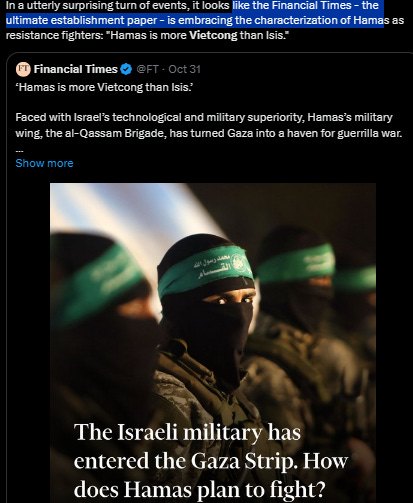

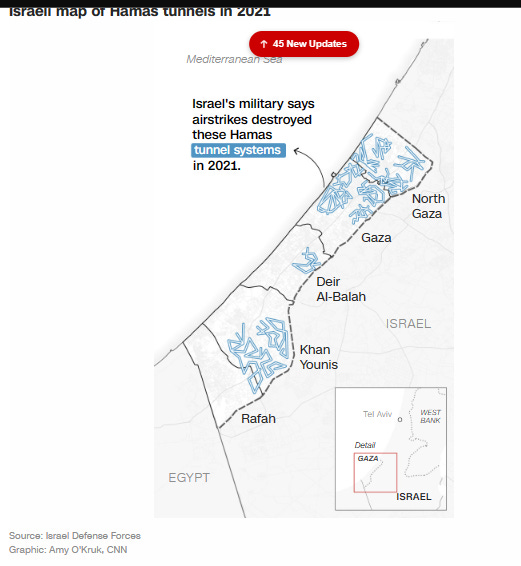
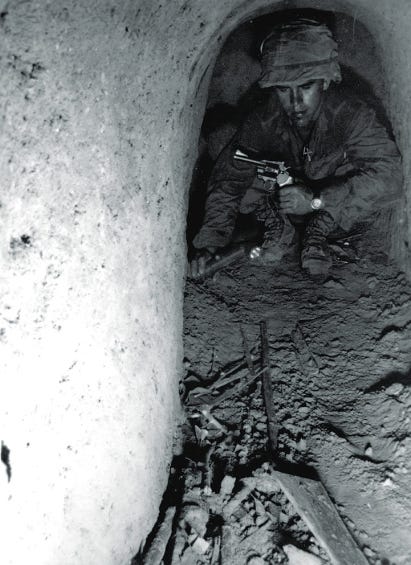
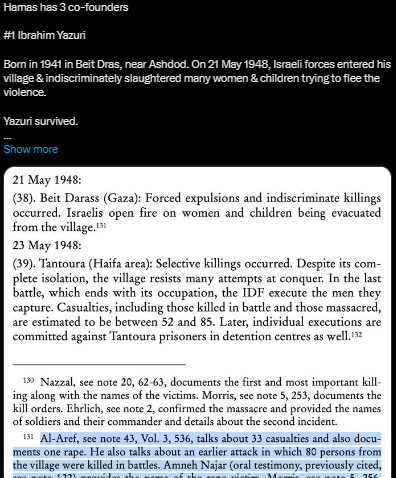

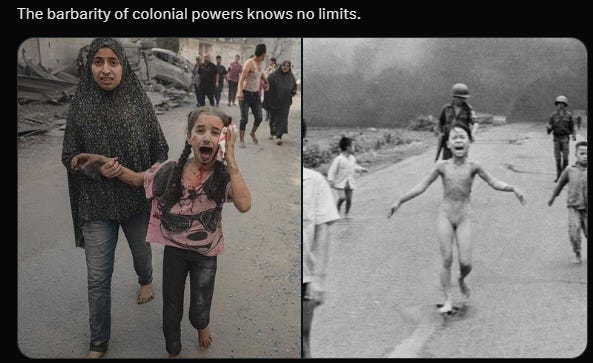

![RTX/Raytheon, General Dynamics Smells Money in the middle Israel's Infinitely Crueller [ps: last time in Ukraine]](https://substackcdn.com/image/fetch/w_1300,h_650,c_fill,f_auto,q_auto:good,fl_progressive:steep,g_auto/https%3A%2F%2Fsubstack-post-media.s3.amazonaws.com%2Fpublic%2Fimages%2F65c660a7-5f37-4418-910e-f7565f9fa965_770x555.png)


